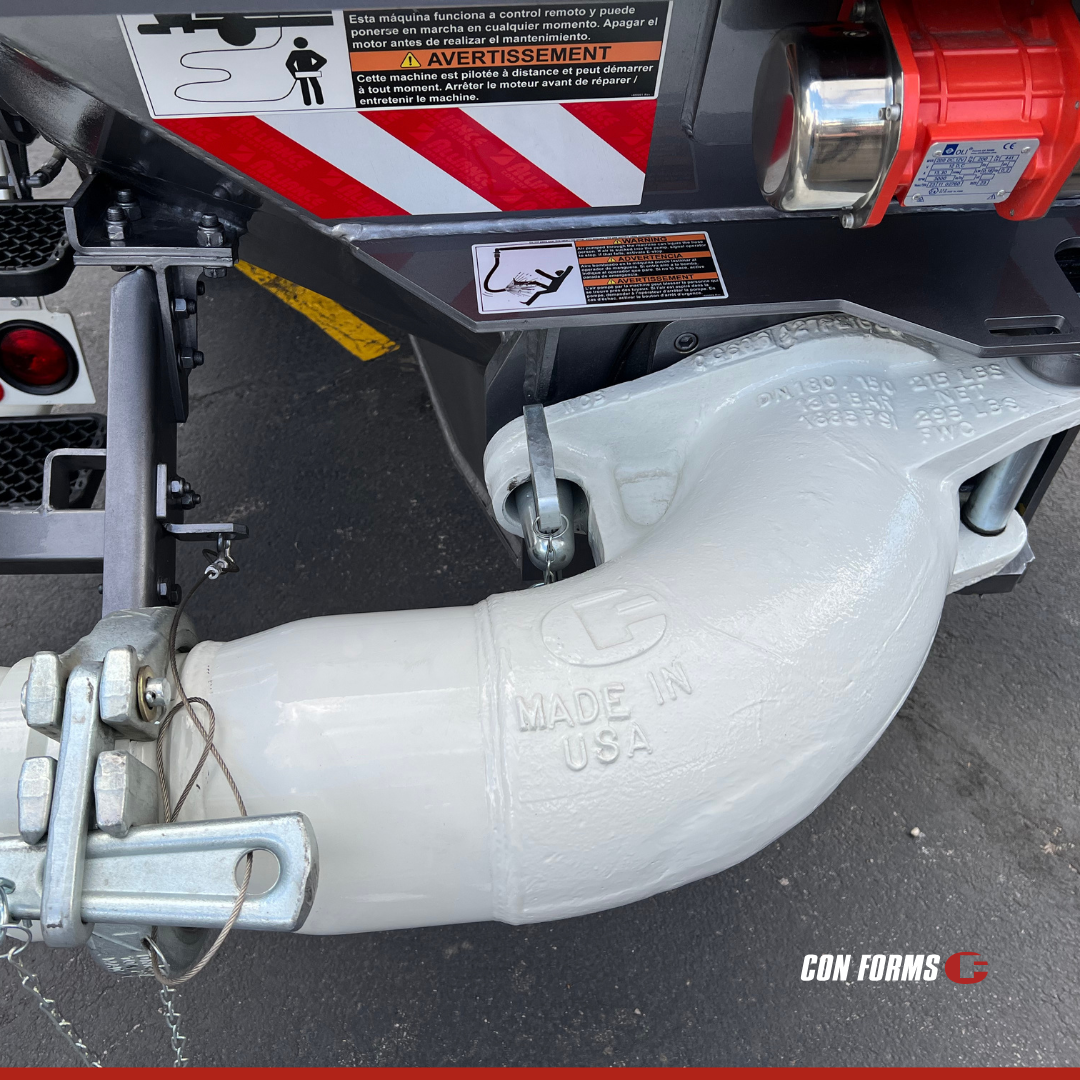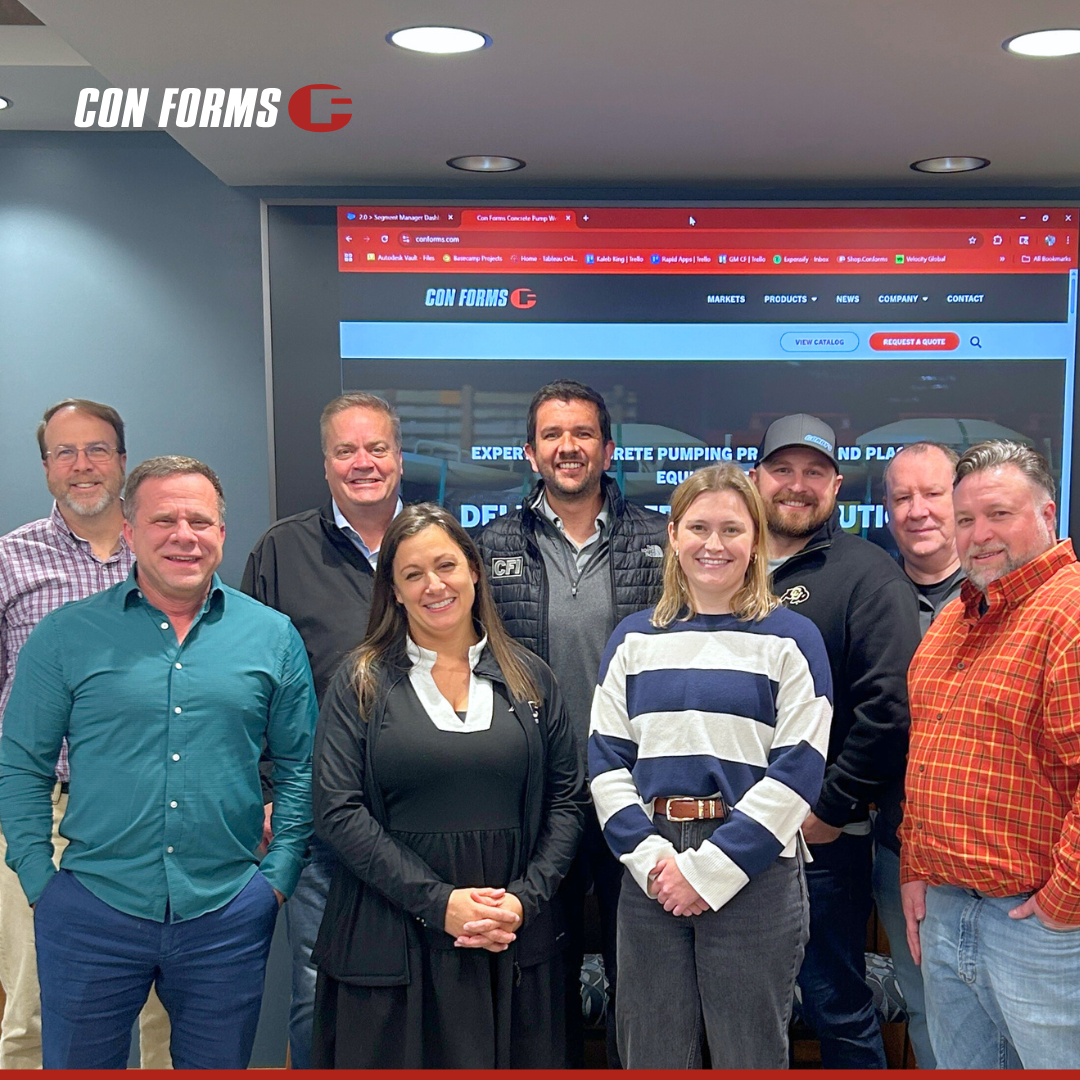Hoses play a crucial role in the efficient placement of any pumped concrete job site. The operator and jobsite personnel are either in direct contact or near many hoses on the jobsite. It is difficult to track hose wear using yardage figures, so inspection every time a hose is used onsite is very important.
Three things need to be kept in mind when dealing with concrete pumping hoses: proper selection for the application, thorough inspection before use and safe jobsite practice when using hoses.
Selecting the Right Hose
Using the wrong hose for the job can have significant safety implications and unintended, negative consequences.
- Step one is starting with a CPMA-certified product that is designed specifically for the severe wear and rugged usage of concrete pumping. They also perform independent audits of products and manufacturers to confirm all certified hoses and pipes meet safety standards.
- Due to differences in friction, hose can be up to four times harder to pump concrete through than steel pipe. This means the pump must work four times harder and use up much more fuel. The pressure required to pump will drastically increase, taxing every component in the system and creating a potential unsafe blow out if any component is unfit to withstand the load. In all laydown applications, use the minimum length of hose that is needed to reach the point of placement.
- The need for hose flexibility and radius of curvature varies depending on the application. Boom end hoses need to be flexible enough to direct the flow to a nearby spot, without kinking, before moving the boom. Laydown lines may need to avoid obstacles along the path or be easily positioned when relocating while on top of rebar sleds. All premium hoses are manufactured with an internal liner, layers of reinforcement (typically fabric or steel cord), and a tough weather- and wear- resistant outer wrap. Your manufacturer should be able to match the hose design, materials and fabrication to meet your application requirements.
- The compatibility of the hose with the pump and mix design is important. The smaller the hose’s diameter, the higher the pumping pressure levels needed to pump the mix at the same volume output rate. The aggregate in the mix must also not be larger than 1/3 the hose inside diameter. For the best results, size the system to the largest diameter that is practical for the application. And always use hose that is rated for working pressures that exceed the rated output of the pump being used.
- Hose length is also important when hanging it from the tip of a truck pump’s boom tip. Reinforced end hoses filled with concrete are heavy and will damage the boom arm if the hose is too long. Always select a hose and combination of components that fit within the boom manufacturer’s guidelines to avoid an unsafe condition.
- Specialty hoses are available for specific applications or jobsite requirements. Examples include anti-whipping end hoses, reducing inside diameter hoses and lay flat end hoses. Check with your hose manufacturer for more details about their use and characteristics.
Inspection of Hoses
Concrete hoses are constantly subjected to wear internally from the concrete being pumped, and on the hoses’ outer wrap from the punishing construction environment. Because they are made from rubber that is more easily damaged than steel pipes, it is important to regularly inspect them for damage that could result in decreased efficiency, costly down time and an unsafe condition leading to a potential accident.
A thorough pre-pumping inspection is the first step in guaranteeing that everything runs smoothly. The following guidelines describe how to conduct an effective inspection:
Outside Cover
- Examine the outside cover for bulges, folds or kinks, and soft spots. These may indicate the inside reinforcement layer could be broken or displaced due to overinflation, deterioration or side-loading trauma. The result is a weak point that will not perform as expected during operations and should be replaced.
- Check for cracks, tears, abrasions, missing material, or exposure of the inner reinforcement layer. Over time, this may cause deterioration of the reinforcement layers, resulting in full-blown ruptures under pumping pressures, and should be monitored for near-term replacement.
Inner Liner
- Examine the inner liner for localized wear areas that indicate wall thinning, paying special attention to the first twelve inches adjacent to the metal hose body.
- Use a flashlight to examine the entire length for signs of exposed reinforcement (sometimes referred to as bird nesting or spider webbing), loose plies, or cuts and gouges. On steel-reinforced hose, do not reach into a damaged hose to avoid getting cuts. Exposed materials are signs of a worn patch that is weakened and cannot withstand full pumping pressures. This can also interfere with the smooth flow of concrete.
- Excessive, dried concrete residue inside the hose can restrict flow and increase pumping pressures.
- Be aware of any discoloration or corrosion, particularly at the hose ends which can point to chemical degradation or exposure to harsh environments.
Metal Ends (Hose body)
- Examine the inlet face of the metal hose body for the wear known as bell-mouthing. Excessive material loss is detrimental to its functionality. Periodically measure the inside opening diameter with a bore gauge and check with the manufacturer for what is acceptable.
- Examine the inside of the hose body under the barb area for signs of wear. This can be seen and felt as a bumpy wear pattern using your fingers. This indicates the hose body has worn completely out and the hose assembly must be retired immediately.
- Verify that the hose is visible through the ferrule inspection hole. If it is not the hose may have started to slip out of the hose body assembly.
Additional Safety Considerations
- Hoses can get soft and flimsy over time. A flimsy hose can kink more easily, and more care must be taken to prevent a kickback.
- Repetitive pressure pulses can cause a hose to lose its pressure handling capability over time. Even though a hose passes visual inspection, its age or usage may have a negative impact on its ability to handle pressure (especially fabric-reinforced hoses).
- Hoses that have experienced heavy sun damage can dry out, which causes the hose to lose flexibility and increase the effort of the operators in the field.
- It is good practice to document a complete inventory of your hoses every six months. Thorough inspections should be done and manufactured dates documented to remove any damaged or old hose from service. Consult your manufacturer about production dates and expected shelf life of that specific hose model.
Inspection of Couplings & Gaskets
The metal ends of the rubber hose and the connecting components are crucial to its safe and effective operation. Proper inspection of all connections is necessary.
- Examine the surface of the Hose Body Assembly where the rubber gasket attaches for damage such as nicks, dents and abrasions. Ensure the area is free of concrete buildup, which could be a sign of prior gasket leakage or a cause of insufficient sealing action by the coupling.
- Ensure that the mating parts are aligned properly. Poorly connected hose ends, or misaligned couplings can cause serious accidents or leaks.
- Ensure that couplings are securely fastened and free from damage or wear. The coupling must make a tight and flush fit to avoid leaks or detachment during pumping. Remember your safety pins in all snap couplings!
- Before every connection, inspect the gasket, clean out the grout, and make sure the gasket is able to seal the joint.
Hose Jobsite Safety
The best concrete hoses in the world should be matched with the best jobsite operational practices:
- Never kink the hose to stop the flow of concrete. Kinks cause blockages and pressure spikes that can violently and uncontrollably straighten out under pressure. Kinking also damages the reinforcement elements of the hose.
- Do not attempt to resolve a hose kink by crushing the sides; this will damage the reinforcing materials and lead to a faster failure.
- Never hang a two-ended discharge hose from a boom unless you are tying it into a system. Always use a one-ended end hose when a hose operator is at the tip.
- Only use hoses that have a working pressure rating that meets or exceeds the maximum pressure rating of the concrete pump with which it is being used.
- Extreme care has to be taken before opening any coupling when dealing with a plugged system.
- Never look into a hose that is plugged.
- Never straddle, sit on or stand on a hose while it is in operation.
- Never use a hose with frays, breaks or exposed braiding/reinforcement on either the inside liner or outside shell.
- Never use compressed air to clean out a hose.
- Never drag a hose by attaching to the coupling or drag a hose using a boom arm.
- Never beat on a hose with a hammer or other blunt object. The impact risks damaging the built-in reinforcing material, which can lead to premature failure.
- Always perform the internal and external visual inspections before every pour, even if this is the second pour of the day.
When used on a placing boom, safety slings or cables need to interconnect all components to prevent any of them falling on someone in the event of a failure of a coupling or the hose itself. The following guidelines are recommended:
- Safety slings are the best defense when a hose becomes separated from a boom. It should be lassoed below the hose body on one end and attached to the boom tip on the other.
- If a separate steel reducer is also used in the tip assembly before the hose, an additional strap will have to be used to tie the assembly to the boom.
- Couplings should never be used as a mounting location for a safety strap.
- Slings sold for use on boom tips should be defect free and only used for that purpose.
Conclusion
By following the above steps, proper care and regular inspection of your pumping hoses will provide a safer job site for you and your customers.




